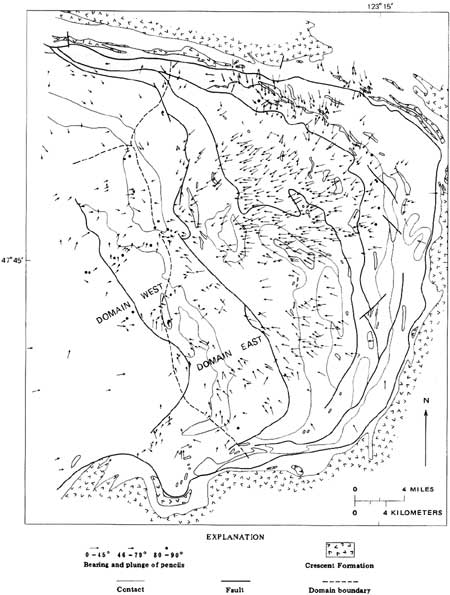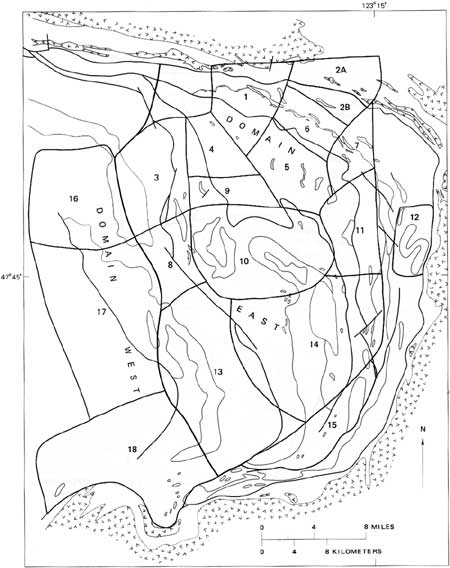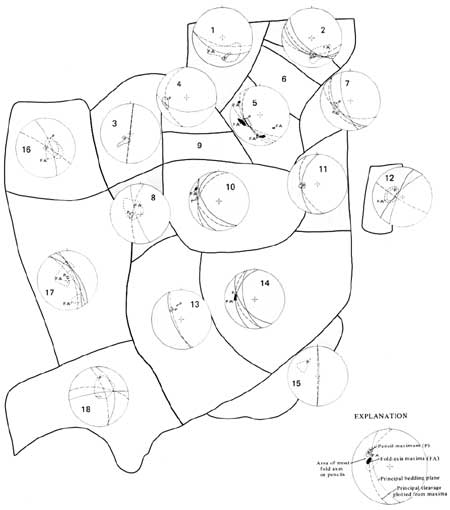
|
Geological Survey Professional Paper 1033
The Structure of the Olympic Mountains, Washington—Analysis of a Subduction Zone |
STRUCTURAL GEOLOGY OF THE EASTERN CORE
(continued)
MAJOR STRUCTURAL TERRANES
We selected two major structural domains and 19 subdomains (fig. 25) on the basis of pencil orientation because it is the most consistent structural element (fig. 24). Although some of the subdomains roughly coincide with the major core units, most are unrecognizable in the field. The boundary between the principal domains, Domain West and Domain East, is recognizable in the field by opposing dips and plunges. Planar structures east of the boundary dip west and southwest, and most pencils plunge westward. In contrast, planar structures west of the boundary dip to the east and northeast, and pencils plunge eastward (fig. 26). Many structures along the boundary have steep to vertical dips. Pencils in subdomains 1 and 2 (east of the boundary) actually plunge south to southeast, but the direction of plunge rotates smoothly and becomes dominantly westward approaching the center of Domain East. Subdomains 16, 8, and 10 best illustrate the progressive change from east to west dip of bedding and cleavage and from east to west plunge of pencils and other linear structures.

|
| FIGURE 24.—Pencil lineations in the eastern core. (click on image for an enlargement in a new window) |

|
| FIGURE 25.—Domains and subdomains in the eastern core. (click on image for an enlargement in a new window) |

|
| FIGURE 26.—Summary of principal structural elements for each subdomain. Data from section at end of text, "Frequency Diagrams for Subdomains." (click on image for an enlargement in a new window) |
Subdomains 1 and 2 extend beyond the core into the peripheral rocks. In subdomain 1, only 18 percent of the data fall outside the core, and these are mostly bedding. In subdomain 2, about 50 percent of the data come from the peripheral rocks; for that reason, we broke subdomain 2 into two small domains, 2A and 2B, separated by the Hurricane Ridge fault. Except for cleavage, not present in most of the peripheral rocks in subdomain 2A, structural elements do not suggest that the peripheral rocks of this area have undergone a structural history highly different from the adjoining core rocks. As will be shown, the difference is mostly one of intensity of deformation.
Elements of the structure are summarized for each subdomain in figure 26. The near-coplanar orientation of all the structures (note the near parallelism of principal beds, cleavage, and axial planes in most subdomains) is to be expected in rocks where cleavage dominates.
| <<< Previous | <<< Contents >>> | Next >>> |
pp/1033/sec1b.htm
Last Updated: 28-Mar-2006